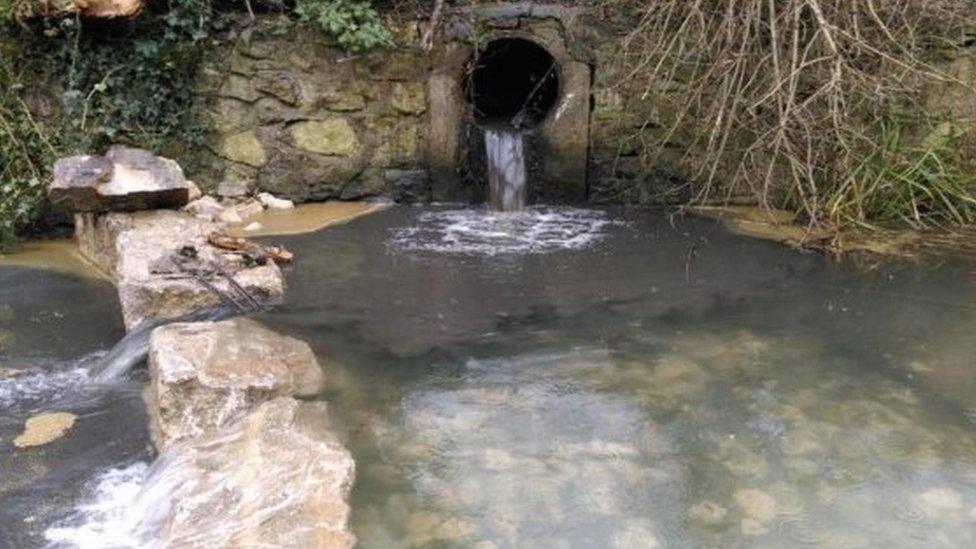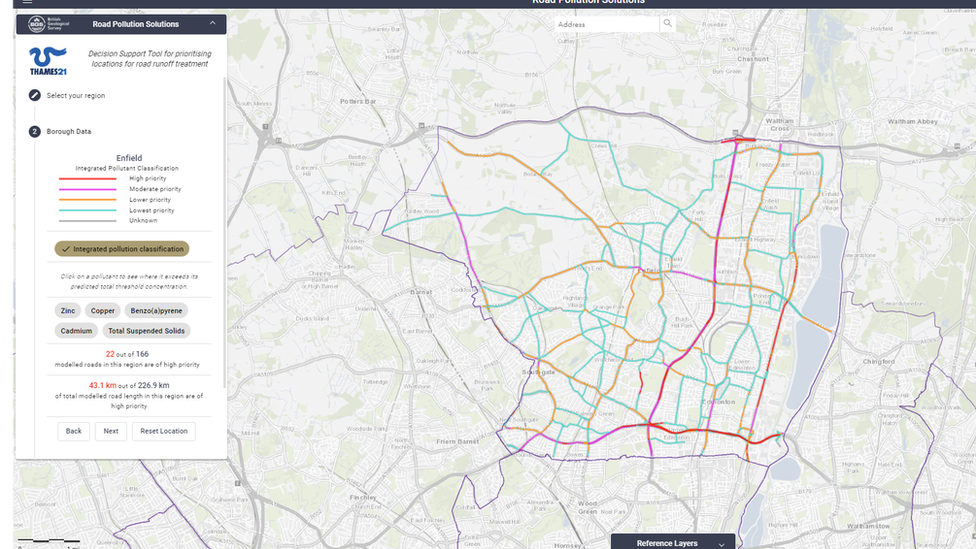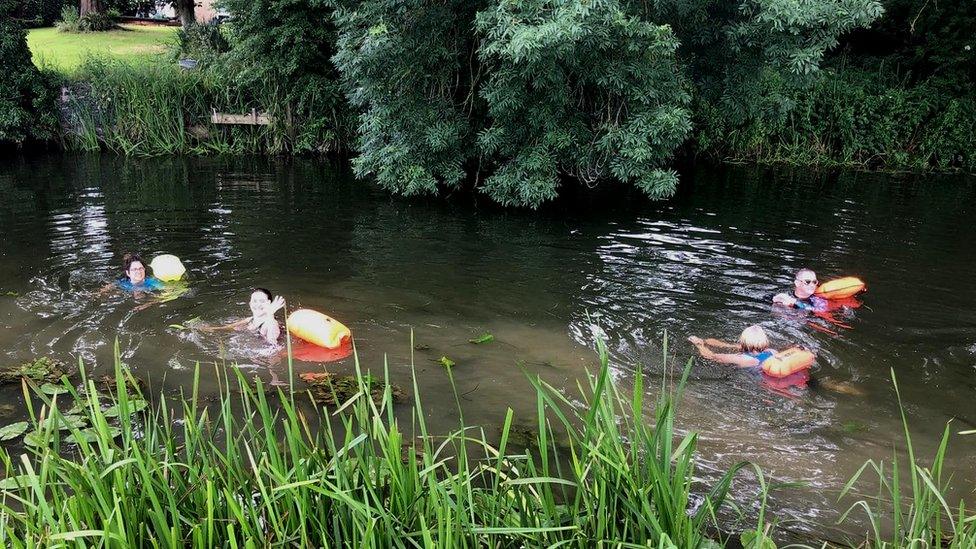London pollution: Maps shows worst areas for road run-off pollution
- Published

Polluted water caused by road runoff in Hogsmill stream, south-east London
A new online map has been created to show where contaminated rain water from roads is polluting rivers in London.
Environmental charity Thames21 has launched the site to help local authorities, as well as local communities, identify problem areas.
The map shows Barking and Dagenham and Barnet as two of the worst areas.
The charity said government funding was needed to put in measures to help tackle the issue. The government said restoring water quality was a priority.
'Devastating impact'
Thames21 said contaminated run-off was caused by oil spills and tyre wear on the roads which was then washed into rivers and streams when it rained.
The interactive map, external, which has been partly funded by the Mayor of London, Transport for London (TfL), and the Environment Agency, highlights more than 280 miles (450km) of London's roads that pose a "high risk of causing road runoff".
These roads are categorised as "a priority for treatment". Roads where heavy goods vehicles regularly apply their brakes were some of the worst affected, the map shows.
The charity said the run-off could be filtered with "natural barriers", such as specially designed wetlands or channels built alongside the busiest roads to prevent pollution flowing into rivers and streams.
John Bryden, head of improving rivers at Thames21, said: "Pollutants from road run-off are having a devastating impact on aquatic wildlife, including killing off fish."

The most polluting roads are highlighted in red
The map has been created with research conducted by the environmental charity, Middlesex University and South East Rivers Trust.
TfL said it already used "sustainable drainage systems" and would use the new tool to identify where these systems could be used elsewhere.

Listen to the best of BBC Radio London on Sounds and follow BBC London on Facebook, external, X, external and Instagram, external. Send your story ideas to hello.bbclondon@bbc.co.uk, external
- Published10 July 2021
